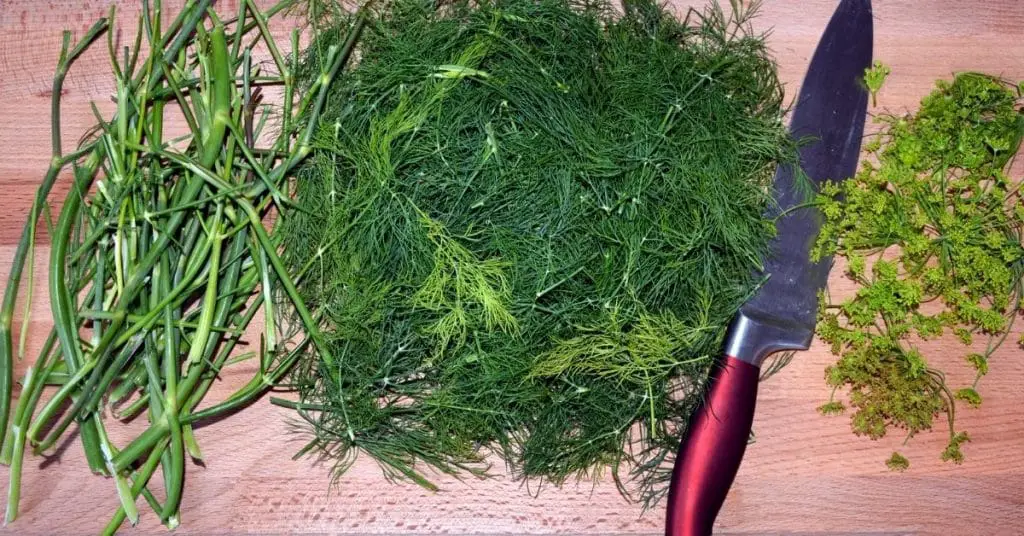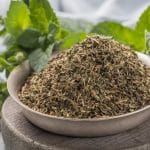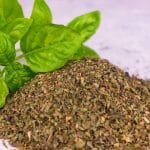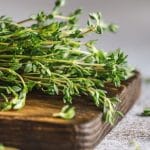In summary: You can dry fresh dill by using one of these two techniques: air-drying by hanging them in bundles or oven-drying by baking them at a low temperature.
Dill conjures up thoughts of delicious potato salads and pickles. This unique herb is popular in European and Asian cuisine, although it is available worldwide. Its wispy leaves make it an easy herb to dry and keep for months without worrying about it going to waste.
There are a few guidelines to ensure that fresh dill does not lose its flavor or spoil during the dehydration process.
Follow the guide below to find out everything you need to know to successfully dry dill.
Can You Dry Fresh Dill Weed?
Yes, you can dry dill. It is an easy herb to dry, especially if you live in a warm, dry climate. There are several methods to dry the herb ranging from natural air-drying to faster oven-drying.
Oven drying is the best way to dry dill if you live in a very humid climate. Humidity and moisture in the air can lead to mold forming before the herb has a chance to dry out completely.
Air drying dill by hanging is the most time-consuming dehydration method and can take 1 to 2 weeks. But, it is the best way to preserve dill for great flavor as exposure to heat slowly dulls the herbal notes.
Once dehydrated and packed into air-tight containers, store dill in a cool, dry place away from direct sunlight.
How To Dry Dill
Preparation: Cleaning
Regardless of the way you choose to dehydrate the dill, it needs to be trimmed and cleaned first.
Step 1: Cut the dill fronds at the base of the stem. Only use sprigs that are in a healthy condition. Discard any yellowed, brown, or moldy stems.
Step 2: Lightly rinse the leaves in cold water to remove dirt.
Step 3: Place the dill leaves on clean paper towels and pat dry. All the excess moisture from washing has to be dried before you start the dehydration process. Let the dill dry further for a few minutes if needed by leaving it on the counter. You can also use a salad spinner to help remove excess water.
Decide whether you want to air-dry or oven-dry the leaves and follow the instructions below accordingly.
Method 1: Air Dry Dill by Hanging
Step 1: Form Bundles
Gather a few dill sprigs and tie them together at the base of the stem with rubber bands. The bundles should not be too big to allow even airflow and drying.
Step 2: Hang
Choose a light place with good air circulation to hang the herb bundles (such as a dry porch). The leafy fronds should be facing downwards. Avoid humid areas such as spaces near a stove, dishwasher, or bathroom. Also, avoid drying the herbs in direct sunlight as this may cause some flavor loss.
Optionally you can cover the bundles with paper bags to catch any dried, falling leaves. Make sure to cut small holes in each paper bag to allow sufficient air circulation. Do not use a plastic bag as this will prevent airflow and cause mold.
Check the leaves after 1 week. When fully dry the leaves should be brittle and break easily when you handle them. The drying process can take about two weeks depending on the climate.
Step 3: Pack
Take the dried herb bundles down. Working over a bowl or plate remove the leaves by running your fingertips down the stem. The leaves should crumble easily. You can crush the dill into smaller pieces with a mortar and pestle if you wish. This is ideal for seasoning salads and making salad dressings.
Step 4: Store
Store the air-dried dill in a glass jar or airtight container and label it with the date and contents.
Note: When drying dill, it is important to make sure that it is completely dry before packing the herbs. Mold will develop if any excess moisture is present, even inside your packaging. If the leaves are still pliable and don’t crumble easily, allow the dill more drying time.
Method 2: Drying Dill In the Oven
Step 1: Preheat Oven
Preheat the oven to its lowest setting around 110 °F (43 °C).
Step 2: Prepare Leaves
Place the cleaned dill leaves in a single layer on a baking sheet lined with parchment paper.
Step 3: Bake
Place the tray of leaves inside the preheated oven and prop the door open slightly to allow for some airflow. Turn the leaves after 40 to 60 minutes to allow even drying on both sides. Return the tray to the oven. Check the dill every 30 minutes to make sure it does not burn.
The dill will be dried out between 2 and 6 hours. The length of time required will depend on the climate as well as the oven type. When fully dried, dill crumbles easily between your fingers.
Step 4: Store
Let the dried dill cool completely. Remove the leaves from the stem and crush them into smaller pieces if desired. Store dried dill in resealable plastic bags, spice bottles, or airtight containers. Label with the date and contents.
Types of Dill
Fresh dill leaves are known as dill weed, while the seeds are known as dill seeds and used as a spice. The dill plant has thin feathery green leaves that form in bunches on thick stems.
If you love dill, you’ll be familiar with the intense flavor of licorice with notes of aniseed. Flat, oval fruits produce the dill seeds. These have a similar taste to caraway.
Due to these bold flavors, dill does not need to be used in large quantities. Dill herb pairs well with eggs, salad, and is used in ranch dressing. The seeds are commonly used in pickling and spice seasonings.
FAQs
Properly dehydrated dill will last a whole year long, maybe even two years if kept in a cool, dry, and dark place such as a spice cabinet or kitchen cupboard.
If you are using dried dill weed instead of fresh, only use one-third of the recommended amount. Dried dill weed has a more concentrated flavor than fresh herbs. If your recipe calls for 1 tablespoon of fresh dill, you can use one teaspoon of dried dill instead.
Yes, you can use the microwave to dry herbs, however, this is not the best method for optimal flavor preservation due to the loss of essential oils. Microwave-dried dill most likely won’t maintain its flavor for more than a few weeks.
To dry the herbs in the microwave, remove the fronds from the stem and lay them on a paper towel in a single layer. Place another towel on top to cover the leaves. Microwave on high in 30-second intervals, checking after each round. Continue for 1 to 4 minutes until the leaves are dry and brittle.
Yes, in fact, freezing dill (and the flower heads) will preserve the flavor and color a little better than drying fresh dill weed.
You can dry the dill leaves and seeds. The stems are usually not dried as they can become tough and woody.
Conclusion
The method you choose to dry dill weed will depend on the climate, time, and equipment available. You can also use a food dehydrator to dry and preserve dill weed successfully. Instructions for the specific device will be provided in its accompanying manual, although the process is similar to oven-drying.
Always make sure you dehydrate dill completely before packing to avoid moldy growth. Dried dill will serve you well for many months and spruce up delicious recipes with a unique burst of flavor.
See more guides on how to dry basil, mint, sage and thyme.
Up Next: What can you substitute for dill?
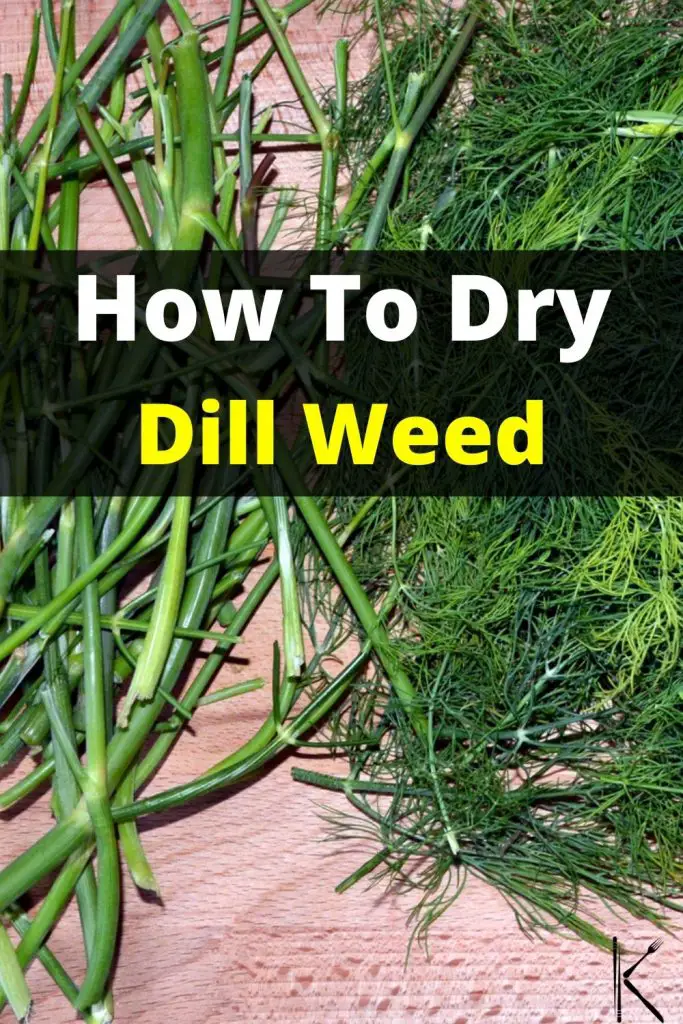
*image by ComandaX/depositphotos
